Welcome to our latest edition of regional artists. This week we are heading to the southern region of Cornwall to explore a rich history of Cornish artists and art schools including St Ives and Newlyn.
 Above: a detail from an illustration of The Lion Rock from Views in Cornwall by Thomas Rowlandson, 1812
Above: a detail from an illustration of The Lion Rock from Views in Cornwall by Thomas Rowlandson, 1812
If you are interested in learning more about British artists, please see our previous articles on Cumbria, Scotland, Kent and The Cotswolds.
Henry Bone (1755-1834)
Born in Truro, Henry Bone was celebrated for his enamel portraiture. Son to a cabinet maker, Bone was at first an apprentice to William Cookworthy, the founder of the Plymouth porcelain works. Cookworthy was the first manufacturer of hard-paste porcelain in England, a significant invention in western art history. At the porcelain factory, Bone’s skill for decoration flourished and he went on to become a member of the Royal Academy. In 1800 he began to work for royalty and was appointed as enamel painter to both George III and later William IV.
 Above: three enamel portraits by Henry Bone including Charles X after Gérard, George IV as Prince Regent after Lawrence and Matthew Baillie after Hoppner
Above: three enamel portraits by Henry Bone including Charles X after Gérard, George IV as Prince Regent after Lawrence and Matthew Baillie after Hoppner
Called the ‘Prince of Enamellers’, Henry Bone offered his extensive collection to the nation before his death for a sum of £4000 (they were in fact valued at £10,000). This was declined and so his work has been dispersed through several sales, most notably a Christie’s auction of 1836.
Dod Procter (1890-1972)
Although she was born in London, Dod Procter spent the majority of her working life in Newlyn, Cornwall. Due to an artistic education in London and Paris at the turn of the century, Procter and her husband had a strong influence from the impressionist and post-impressionist movements. A member of the Newlyn school and later the president of St Ives Society, Procter also exhibited at the Royal Academy numerous times. Her most notable work was shown at the Royal Academy in 1927, entitled Morning the painting was later purchased by the Daily Mail on behalf of the nation.
John Opie (1761-1807)
John Opie was a prominent painter in the genres of history and portraiture. Born in Trevellas (between St Agnes and Perranporth) he showed a talent for art from a young age. However, his father encouraged him to choose a carpentry career. Opie’s artistic skill was fortunately noticed when Dr John Wolcot visited the carpentry shop. Wolcot insisted that he come to study art at his home in Truro and paid off the carpenter he was an apprentice to.
 Above: a detail from an engraving after John Opie’s 1787 Royal Academy exhibition work entitled Mary, Queen of Scots witnessing the murder of David Rizzio
Above: a detail from an engraving after John Opie’s 1787 Royal Academy exhibition work entitled Mary, Queen of Scots witnessing the murder of David Rizzio
Once his skills were perfected, Wolcot introduced Opie to Sir Joshua Reynolds in London. Reynolds compared Opie’s work to that of Caravaggio and Velazquez. Although his work suffered in terms of popularity later on in his career, Opie was appointed as a professor at the Royal Academy in 1805. After his death he was buried next to Reynolds in St Paul’s Cathedral.
Emily Stackhouse (1811-1870)
Famed for her botanical illustrations, Emily Stackhouse was born in Devon but came from an old Cornish family and a long line of botanists. The farm of her family’s estate, Trehane Barton, is now a Site of Special Scientific Interest. In 1851, she composed an impressive collection of over 200 illustrations for a natural history book entitled Flowers of the Field. Much of her work went uncredited, or was simply signed E.S.
 Above: botanical illustrations of an Ever Green Alkanet and a Deadly Nightshade by Emily Stackhouse
Above: botanical illustrations of an Ever Green Alkanet and a Deadly Nightshade by Emily Stackhouse
Stanhope Forbes (1857-1947)
Forbes was a founding member of the Newlyn school of art, alongside his wife Elizabeth Adela Forbes. Although he was born in Dublin and his wife Elizabeth was Canadian, they settled in Cornwall and spent the majority of their lives there. Attending the Royal Academy under Sir Frederic Leighton and Sir John Millais, he perfected a technique for en plein air on a trip to France. Painting outdoors would become his signature style and part of the philosophy of the Newlyn School.
 Above: two paintings by Stanhope Forbes entitled The Convent and The Fishermen’s Expedition
Above: two paintings by Stanhope Forbes entitled The Convent and The Fishermen’s Expedition
Neville Northey Burnard (1818-1878)
Born in the village of Altarnun, near Bodmin Moor in Cornwall, Neville Northey Burnard was the son of a local stonemason. He went on to become a celebrated sculptor, exhibiting at the Royal Academy from 1848 to 1873. His work was in high demand from the upper classes and aristocrats and he was successful for several years, even being introduced to Queen Victoria.
Unfortunately, Burnard lost his wife and daughter and became dependent on alcohol. Unable to work, he became homeless and died in Redruth Workhouse in 1878. One of his most famous sculptures is still on display in Cornwall, although in poor condition. It is a statue of Richard Lander on the top of the Lander’s Monument in Truro.
The Newlyn School
From the 1880s to the early 20th century, the Newlyn School of artists practised in and around the area across from Penzance. After trips to the south of France, many artists found Newlyn to be a similar area that would give them the freedom and inspiration to paint outdoors. Walter Langley, Stanhope Forbes and Elizabeth Forbes were some of the earliest artists to form the Cornish artists colony, they were later joined by Frank Bramley, Frederick Hall, Thomas Cooper Gotch, Laura Knight, Alfred Munnings, Harold Harvey and Lamorna Birch to name but a few.
 Above: artwork produced by the Newlyn school – Harold Harvey, Laura Knight and Walter Langley
Above: artwork produced by the Newlyn school – Harold Harvey, Laura Knight and Walter Langley
St Ives School
In the mid 20th century, abstract and constructivist sculptors came to work in Cornwall. The most well known being Dame Barabara Hepworth. Although Hepworth was born in Yorkshire, her work was primarily produced in St Ives. Her husband Ben Nicholson, as well as Christopher Wood and Naum Gabo were some of the earliest members of this movement. The height of success for the style was in the 1950s and 1960s and much of the modern abstract art produced in the period is still well regarded as part of British art history. Due to the importance of the St Ives School, Tate opened a gallery in the area in 1993 to exhibit the work of these artists as well as similar genres.
Get in touch
If you have an artwork in need of restoration, our trained conservators are available to offer professional treatments and repairs. This includes collection and delivery from Kent and the surrounding areas, as we have our own drivers throughout the United Kingdom offering safe and secure transport.
To make contact please email us via [email protected] or call 0207 112 7576

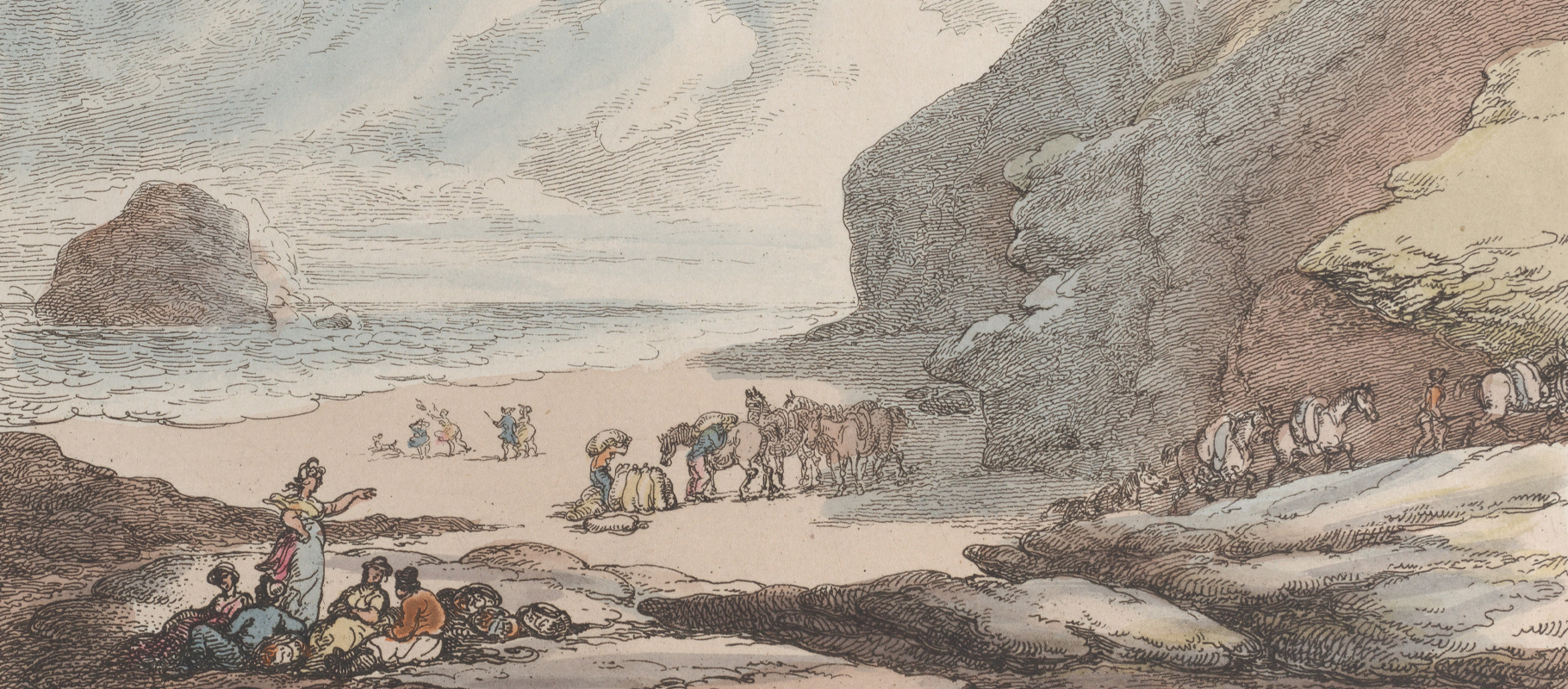 Above: a detail from an illustration of The Lion Rock from Views in Cornwall by Thomas Rowlandson, 1812
Above: a detail from an illustration of The Lion Rock from Views in Cornwall by Thomas Rowlandson, 1812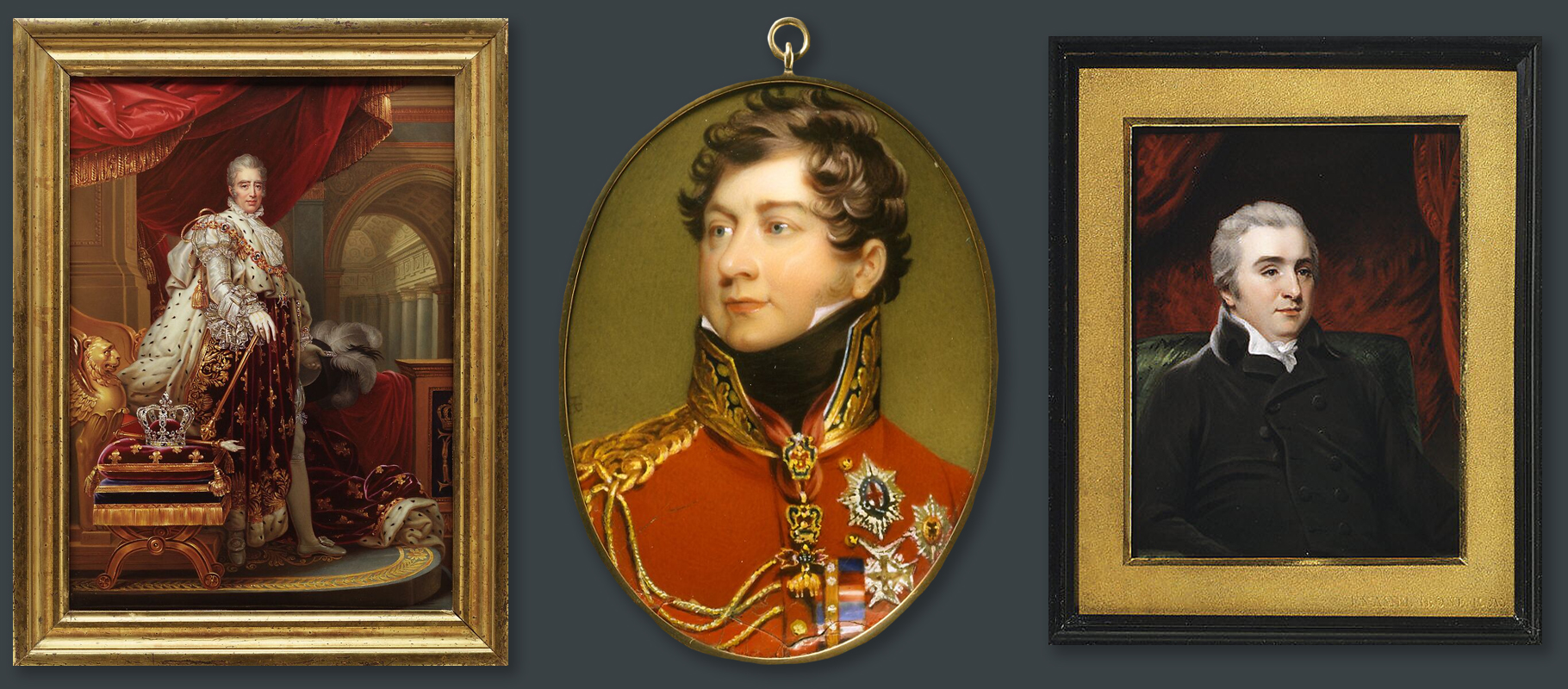 Above: three enamel portraits by Henry Bone including Charles X after Gérard, George IV as Prince Regent after Lawrence and Matthew Baillie after Hoppner
Above: three enamel portraits by Henry Bone including Charles X after Gérard, George IV as Prince Regent after Lawrence and Matthew Baillie after Hoppner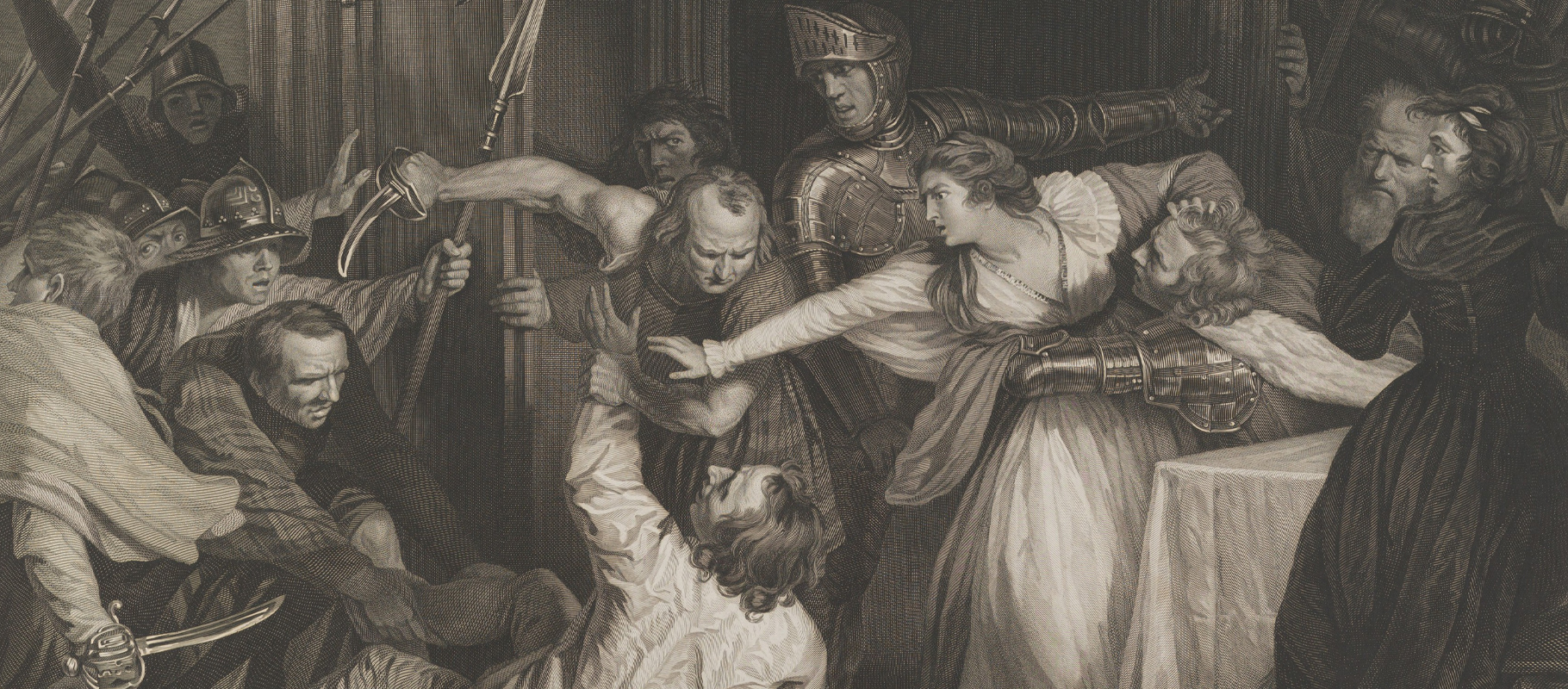 Above: a detail from an engraving after John Opie’s 1787 Royal Academy exhibition work entitled Mary, Queen of Scots witnessing the murder of David Rizzio
Above: a detail from an engraving after John Opie’s 1787 Royal Academy exhibition work entitled Mary, Queen of Scots witnessing the murder of David Rizzio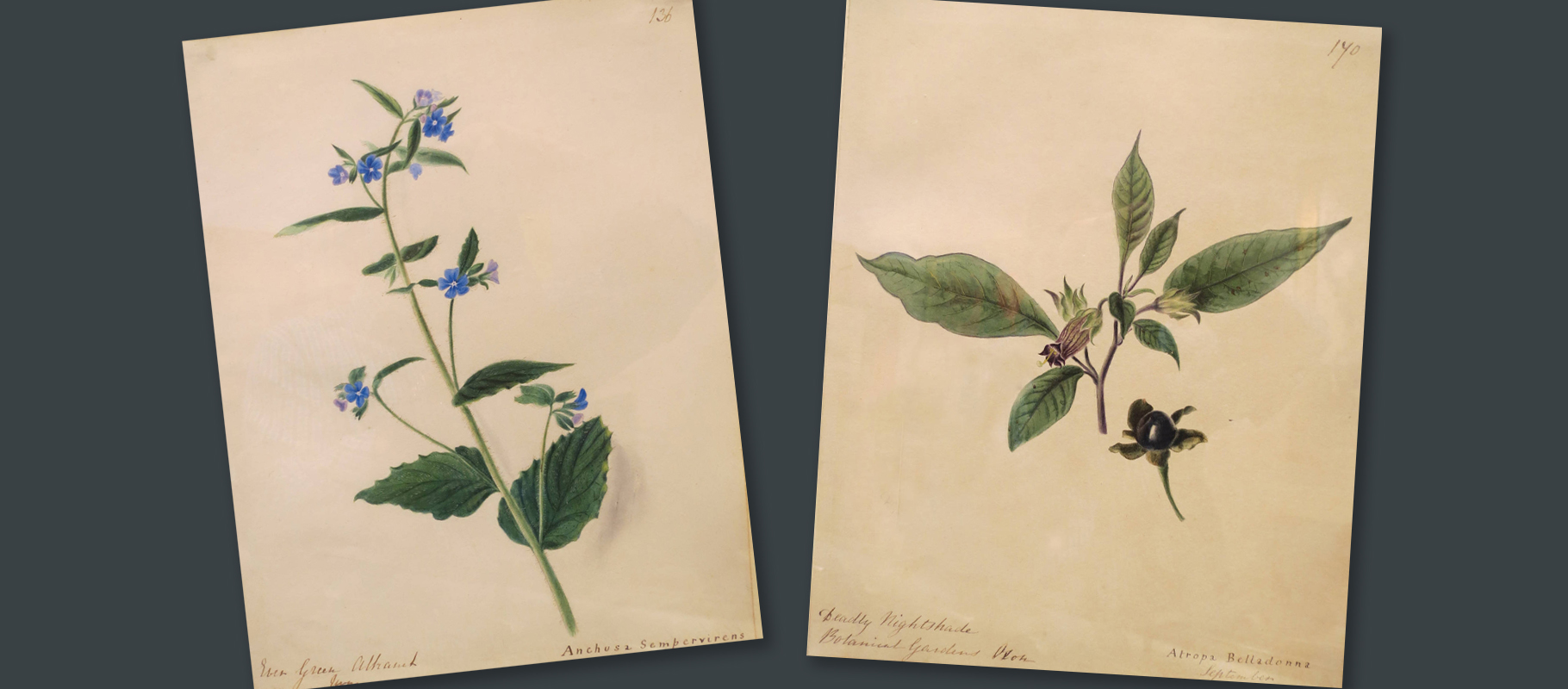 Above: botanical illustrations of an Ever Green Alkanet and a Deadly Nightshade by Emily Stackhouse
Above: botanical illustrations of an Ever Green Alkanet and a Deadly Nightshade by Emily Stackhouse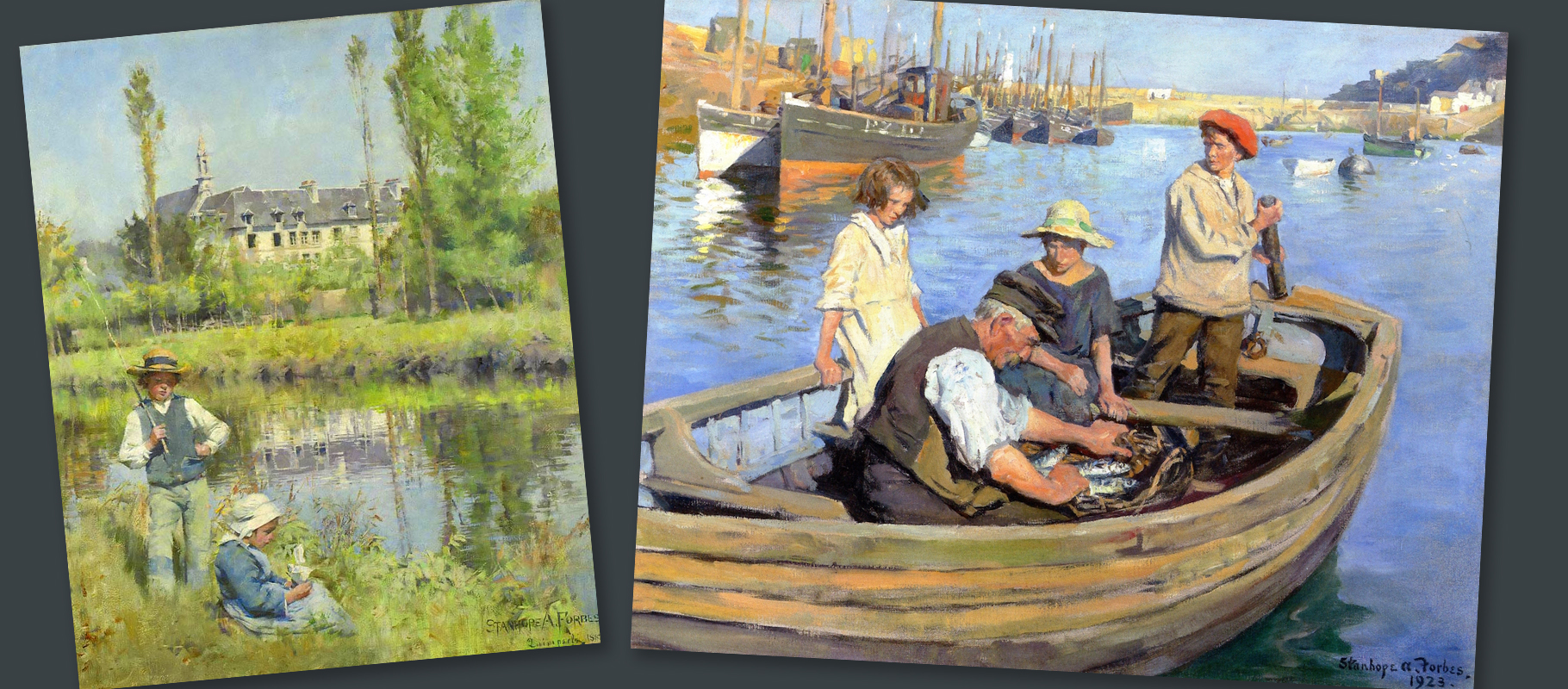 Above: two paintings by Stanhope Forbes entitled The Convent and The Fishermen’s Expedition
Above: two paintings by Stanhope Forbes entitled The Convent and The Fishermen’s Expedition  Above: artwork produced by the Newlyn school – Harold Harvey, Laura Knight and Walter Langley
Above: artwork produced by the Newlyn school – Harold Harvey, Laura Knight and Walter Langley




